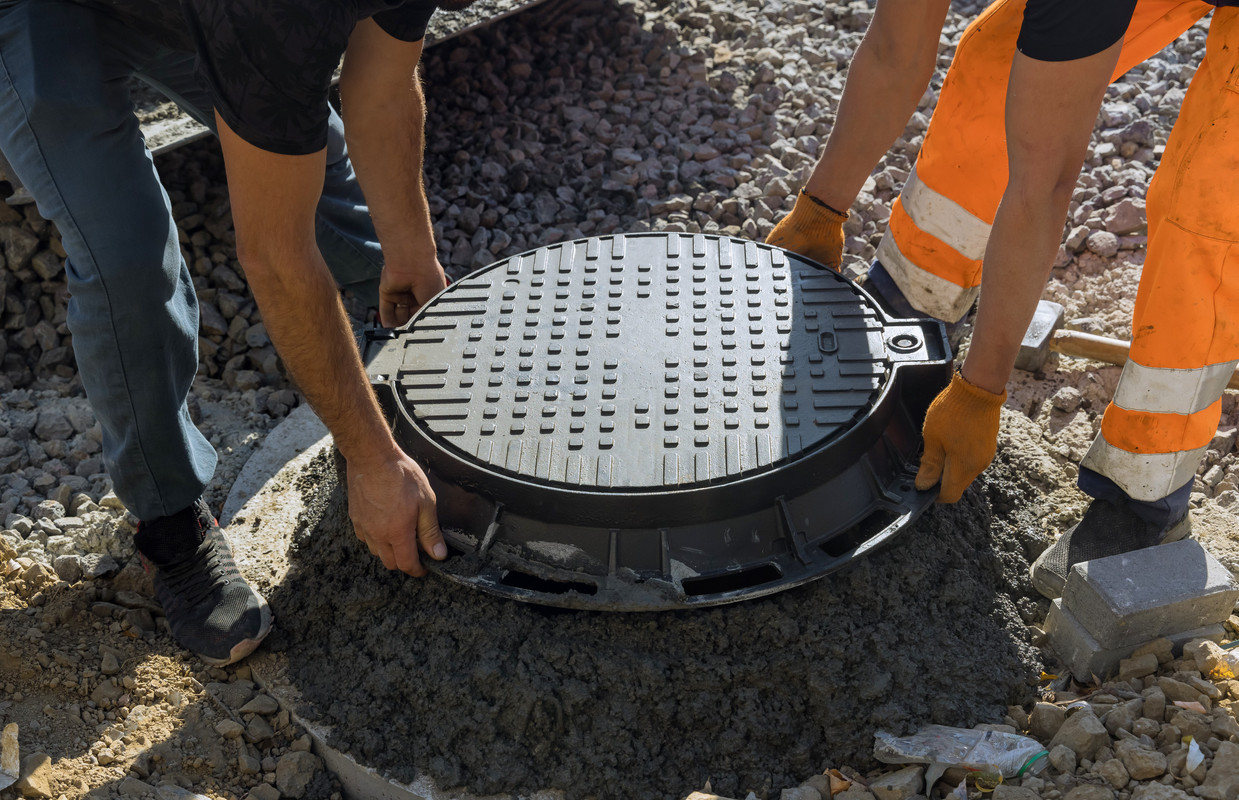The Pros and Cons of Septic Tanks
by siteadmin

When you’re looking to purchase a new septic tank, it’s important to weigh up all the pros and cons. This can help you make a more informed decision.
Septic tanks are watertight chambers used to treat wastewater, separating solids from liquids before disposal into leach fields. Generally wastewater enters the septic tank via a piping system and is treated by an anaerobic and settling process.
Installation
Septic tanks are a common type of waste water treatment system that is used in homes across Western Australia. These are designed to help protect the health of people and the environment by removing contaminants from wastewater.
Septic tank installation is a process that requires the help of a licensed contractor who has experience with installing these systems. They also know the laws and regulations surrounding this type of plumbing so you can trust them with your system.
A septic tank is a buried container that receives raw sewage from your home’s plumbing drains. There, solids are separated from the sewage and partially digested by anaerobic bacteria. This process helps reduce the amount of harmful odors and other harmful chemicals that can be released into the environment.
After the wastewater has been processed, it exits the septic tank through an outlet pipe. The wastewater then passes through an absorption area, such as a drain field.
When the wastewater reaches this area, it is filtered through rocks and soil to remove impurities naturally. It then drains to the ground and returns into underground aquifers.
If you want to have your septic tank installed in Perth, it’s best to hire a professional who is certified to install septic systems. This is because these experts know the rules and regulations and can handle inspections and repairs for you.
They also have the tools and equipment to ensure that your septic tank is installed properly, which will make sure it works as efficiently as possible. They can also offer you a number of other services that will help you maintain your system and keep it running smoothly.
One of the most important parts of any septic tank installation is making sure that it is level. This is to prevent any leakage or overflows.
Another important factor is the size of the septic tank. The proper size depends on the number of people living in your house and the amount of sewage that needs to be processed.
A septic tank should be pumped at least once every three years. If this is not done, it can cause your septic system to fail. The first signs of failure include slow-draining fixtures and sewage backed up into your house.
Inspection
Septic tanks are buried watertight containers that are designed to collect and store all the wastewater from your household before dispensing it through a drain field. These systems come in various sizes, depending on the size and design of the property and its plumbing.
When wastewater enters the septic tank, heavier solids sink to the bottom of the tank where they are broken down by bacteria. This reduces the amount of solids in the tank. The remaining liquid, called effluent, flows through the septic tanks’ drainage receptacles into a leaching field where it is further treated and purified.
Inspecting a septic system is an important part of maintaining it and ensures it is working properly. It also enables you to detect problems before they become major issues, as well as helping you save money on maintenance costs over time.
During an inspection, the technician will look at the tank’s capacity, the drain lines and distribution box to see if they are working as they should, and the baffles in the tanks to make sure they aren’t blocked. They’ll also check the septic system’s drainfield, looking for signs of failure and damage.
If your septic system is not properly maintained, it can cause serious health problems and environmental concerns. This is why it’s recommended to have your septic system regularly inspected and pumped.
How often your septic tank needs to be pumped depends on several factors, including the size of the tank, how many people live in your home, and how much water you use. Generally, most septic systems need pumping every three to five years, but the frequency will vary with your individual situation.
The septic system’s location is also important. It’s best to draw a map of the tank’s location – in relation to fixed points like the corners of your house or steps – and place it over the tank lid.
You should also keep a sketch of the drainfield, noting its location and how it should be diverted away from your property. This will help you locate the drainfield if you ever need to dig it up or repair it.
Repair
When you have a septic tank on your property, it's important to keep it in good condition so that it can function properly. This means having it pumped out regularly and cleaning out the sludge on the bottom.
Septic tanks work by using natural and mechanical processes to remove waste and sludge from wastewater. They also help to reduce pollution and protect the environment by preventing sewage from entering groundwater sources.
They are generally made of concrete or plastic and hold between 1,000 and 1,500 gallons of water. They're installed underground and connected to a drainage field.
Once in the tank, raw sewage is treated by bacteria that eat the solids and reduce them to sludge. This sludge is then moved into the drain field and undergoes further treatment by the soil.
In addition, the bacteria in septic tanks can be boosted by adding chemical and biological additives that speed up the breakdown process and encourage more bacteria to grow. However, these chemicals can disrupt the delicate balance of bacteria in a septic tank, which can eventually lead to system failure.
Some newer septic tanks feature basket-like filters that enhance treatment by trapping and retaining solids, such as grit, unconsumed food particles or soil, in the wastewater. These screens need to be hosed clean and replaced periodically.
Another way to extend the life of a septic tank is to prevent clogging by only flushing biodegradable waste products down the toilet. Flushing cigarette butts, cotton buds or menstrual hygiene pads, condoms and other non-biodegradable materials down the drain can cause serious damage to your septic system and may even require costly repair.
A septic system can be more affordable than connecting to public sewer systems, especially in rural areas where the cost of building a line is prohibitively expensive. They also offer flexibility that isn't available with public sewers.
Septic systems are subject to a number of regulatory obligations, including those under the Ontario Building Code (OBC). If your septic system is discharging into a stream or river and you aren't sure whether it meets these regulations, you should consult a professional septic installer to find out.
Maintenance
A properly maintained septic tank system is essential to the health of you, your family and the environment. Without regular maintenance, a system can become unusable and may lead to costly repairs or even the need for replacement.
To keep your septic tank in good condition, you need to perform regular inspections and pump out the system from time to time. This will help you save money, maintain the system and make sure that it is working properly.
Your septic tank is designed to store and treat wastewater from your kitchen, bathroom, and laundry. It separates the liquid waste from the solids that are not digested by bacteria and then safely discharges them into a drain field where they are treated by soil organisms.
If your septic tank becomes clogged with solids, it will need to be pumped out. This is often called desludging, and is an essential part of septic tank maintenance.
You should check the sludge level in your septic tank at least once a year to ensure that there isn’t any overflow of scum or sludge getting into the disposal trenches. The sludge layer should be no more than 800mm thick, and it shouldn’t be thicker than 300mm at the top of your tank outlet opening (in other words, the outlet tee or baffle).
As a rule of thumb, you should have your septic tank pumped out every three to five years depending on the size of your home, how many people use the home, and any blockages or overflow that occur.
It is also a good idea to hire professional septic service technicians to inspect your system on a regular basis. This is important because it will allow them to catch problems early before they get worse and cost you a lot of money in repair work or the need for a system replacement.
Your septic system is a complex system that should be looked after by a qualified and experienced septic professional. A septic professional can provide you with helpful tips and advice for keeping your system in tip-top shape.
https://www.septictankarmadale.com.au/
When you’re looking to purchase a new septic tank, it’s important to weigh up all the pros and cons. This can help you make a more informed decision. Septic tanks are watertight chambers used to treat wastewater, separating solids from liquids before disposal into leach fields. Generally wastewater enters the septic tank via a piping…
Recent Posts
- Junk Removal Las Vegas: Your Trusted Partner for Dumpster Rental and Trash Pickup
- Masterclass in Junk Removal: Elevate your Skills to Elite Levels with our Comprehensive Guide
- The Roadmap to Junk Removal Nirvana: Discovering the Path to Organizational Bliss
- Junk Removal Prodigy: Unlocking the Secrets to Becoming a Certified Clutter Crushing Champion!
- From Hoarder to Haven: Mastering the Art of Decluttering with Cutting-Edge Junk Removal Techniques
